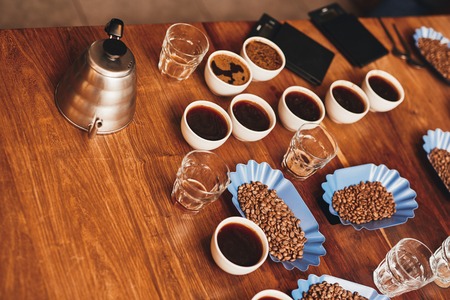Tracing the Aroma: History of Coffee Houses in India
Step inside any bustling Indian city, and you’re bound to stumble upon the inviting aroma of freshly brewed coffee wafting from a local café. But these are no ordinary establishments—they are living chronicles of intellectual exchange and social evolution. The story begins in colonial-era Kolkata, where the legendary “addas” flourished in the heart of Indian Coffee House on College Street. Here, poets, professors, and revolutionaries gathered around chipped wooden tables, debating everything from Tagore’s verses to Gandhi’s latest call for swaraj. These addas were more than mere retreats for a cup of strong, sweetened coffee; they were sanctuaries for free thought, dissent, and cultural ferment.
As the British Raj expanded southwards, so did the love affair with coffee. In Bengaluru—India’s own Garden City—the filter kaapi joints became iconic pit stops for office-goers and artists alike. The city’s famed Central Coffee House on MG Road saw luminaries from Kannada literature exchanging ideas over steel tumblers filled with piping hot filter coffee and crispy dosas. Whether in Mumbai’s Irani cafés or Chennai’s literary haunts along Mount Road, each region added its unique tadka to the evolving coffee house culture.
Over decades, these vibrant spaces transformed into melting pots that transcended caste, creed, and linguistic boundaries. Students from Presidency College could rub shoulders with retired civil servants or street-side poets—everyone found a seat at the table. Within their walls, spirited debates on politics, cinema, cricket, and philosophy echoed late into the night. The humble coffee house thus emerged not just as a caffeine fix but as an essential institution—nurturing India’s intellectual landscape one cup at a time.
Chai Pe Charcha: Coffee Houses as Hubs of Intellectual Exchange
If you stroll down the bustling streets of Kolkata’s College Street or the leafy avenues of Bengaluru’s Church Street, you will inevitably stumble upon a coffee house echoing with animated voices and clinking cups. The phrase “Chai Pe Charcha”—literally, “discussion over tea”—has become synonymous with India’s distinctive tradition of gathering at cafés not only for a caffeine fix but also to engage in spirited debate. These spaces are more than meeting points; they are incubators of ideas, where diverse minds converge to question, challenge, and reimagine society.
Debate and Dialogue: An Indian Tradition
Long before hashtags and viral tweets, Indian intellectual culture thrived on face-to-face dialogue. Coffee houses became natural extensions of this ethos, drawing students from nearby universities, artists hungry for inspiration, writers nursing their next manuscript, and activists strategising social change. The aroma of freshly brewed filter coffee mingles with intense discussions—ranging from politics and philosophy to cinema and cricket—fuelled by a shared desire to understand and reshape the world.
The Melting Pot: Who Gathers at the Coffee Table?
| Group | Typical Conversation Topics | Popular Coffee House Items |
|---|---|---|
| Students (Vidyarthis) | Exams, student politics, career dreams | Masala chai, samosas |
| Artists & Writers | Art movements, poetry readings, book launches | Cappuccino, bun maska |
| Thinkers & Academics | Philosophy, literature, public policy debates | South Indian filter coffee, idli-sambar |
| Activists & Change-makers | Social justice campaigns, protest strategies | Lemon tea, pakoras |
A Safe Haven for Dissent and Innovation
Coffee houses in India are celebrated for their sabhyata aur vichar-vimarsh: civility and critical thought. Unlike formal debates or heated TV panels, these venues offer a safe haven where even the most radical ideas find space to bloom. The informal setting encourages everyone—from first-year students to seasoned professors—to voice opinions freely. Many legendary movements, from the Progressive Writers’ Association in pre-independence days to contemporary feminist collectives, trace their roots back to conversations sparked within these very walls.
The Language of Debate: A Multilingual Tapestry
No discussion on Indian coffee house culture would be complete without acknowledging its polyglot nature. Here, Hindi jostles with English; Bengali poetry flows into Urdu couplets; Tamil political jokes spark laughter alongside Marathi proverbs. This vibrant multilingualism mirrors the nation’s diversity and ensures that every debate is as layered as the froth atop a tumbler of filter kaapi.

3. Indian Flavour: Unique Customs and Lingo of Desi Coffee Houses
Step into any Indian coffee house, and you’re instantly enveloped in a world that is unmistakably desi—layered with its own rituals, rhythms, and rich vocabulary. Unlike their Western counterparts, Indian coffee houses are not just about sipping cappuccinos; they are vibrant hubs where local traditions meet intellectual fervour. Here, the tables are often crowded with steaming cups of strong filter coffee or the ever-popular ‘cutting chai’—a half-glass of robust tea that fuels many a passionate debate.
Local Brews and Bites: The Heartbeat of Conversation
The menu at an Indian coffee house tells its own story. Alongside the classic South Indian filter kaapi served in steel tumblers, you’ll find masala chai, samosas, bun maska, and plates of buttery dosas being shared among friends and strangers alike. Each order is both a comfort and a catalyst—a reason to linger longer over conversations that span everything from cricket scores to political ideologies.
‘Adda’: Where Minds Meet
No exploration of Indian coffee culture is complete without mentioning ‘adda’—a uniquely Bengali term that has found resonance across urban India. An adda isn’t just a meeting; it’s a marathon session of discussion, storytelling, joking, and gentle argument. In this informal university of life, regulars become philosophers, poets, and critics. The phrase “Chalo, coffee house mein ek adda ho jaye?” (“Let’s have an adda at the coffee house?”) carries with it the promise of hours spent in stimulating company.
The Lingo: More Than Words
Language in these spaces is fluid—a heady mix of English, Hindi, Bengali, Tamil, or whichever tongue is native to the city. Phrases like “ek cutting chai,” “do kaapi,” or “ek aur round lagao” echo through the room as orders are placed and friendships renewed. It’s this tapestry of tastes and talk—spiced with regional slang and camaraderie—that gives Indian coffee houses their unmistakable flavour.
In these timeless nooks—from Kolkata’s College Street Coffee House to Mumbai’s Irani cafés—the rituals and lingo are more than quirks; they are the living essence of India’s collective pursuit for connection and conversation. Here, every sip holds a story, every word sparks an idea—and together they brew the soul of intellectual India.
4. The Great Indian Debate: Influential Movements Brewed Over Coffee
If the walls of Indian coffee houses could talk, they would hum with the echoes of passionate debates, revolutionary whispers, and the clinking of cups that witnessed history in the making. Much more than casual meeting spots, these spaces have brewed some of the nation’s most defining moments—where steaming tumblers of filter kaapi mingled with the fire of ideological transformation.
Coffee Houses: Silent Witnesses to Revolution
From the colonial era to contemporary India, coffee houses have been crucibles where fermenting ideas turned into action. During the freedom struggle, legendary spaces like the Indian Coffee House in Kolkata became sanctuaries for freedom fighters, poets, and thinkers—Subhas Chandra Bose, M.N. Roy, and Satyajit Ray among them—fueling their resolve with endless rounds of robust South Indian filter coffee.
Movements That Found Their Spark Over Coffee
| Movement | Era | Role of Coffee Houses |
|---|---|---|
| Indian Independence Movement | 1930s-1947 | Safe havens for strategizing protests and sharing underground pamphlets |
| Bengal Renaissance | 19th-20th Century | Gathering place for writers and reformers debating social change |
| Naxalite Movement | 1960s-70s | Young radicals discussed Marxist ideology over cups of strong brew |
| LGBTQ+ Rights & Feminist Activism | 1990s-Present | Safe space for marginalized voices to organize and express dissent |
The Modern Pulse: Cafés as Incubators of Change
Today’s urban cafés continue this legacy, albeit with new flavours—both literally and metaphorically. In Bengaluru or Delhi, you’ll find students and activists huddled over cappuccinos, scripting campaigns against climate change or caste discrimination. The aroma of freshly ground beans blends seamlessly with discussions on gender equality or digital privacy; even hashtags are born here before trending across social media. It is no exaggeration to say that every generation’s great Indian debate has found its rhythm beneath the mellow glow of café lights.
5. Changing Brews: Coffee House Culture in Modern India
Across the bustling metropolises of Mumbai, Delhi, and Bengaluru, the Indian coffee house experience has undergone a remarkable transformation. Once defined by the earthy aroma of filter kaapi and the gentle murmur of political debate, today’s café culture is an evolving blend of tradition and modernity. The essence of intellectual exchange persists, but its vessel has shifted—from hand-painted signboards and marble-topped tables to sleek, air-conditioned spaces adorned with global branding.
The Rise of Café Chains and Digital Conversations
Step into a contemporary Indian café—perhaps a buzzing branch of Café Coffee Day or a chic corner in Starbucks—and you will find laptops open next to steaming mugs, WhatsApp pings mixing with clinking cups. The debates continue, yet many have migrated online; social media threads replace spoken word, while memes and viral tweets now spark heated arguments once reserved for physical gatherings. Despite this digital shift, these modern coffee houses still echo the democratic spirit of their predecessors: strangers bond over shared Wi-Fi and college students huddle over group projects, mirroring the communal camaraderie of yesteryears.
Local Flavours Meet Global Trends
The menu itself tells a story of adaptation. Alongside masala chai and South Indian filter coffee, you’ll spot cold brews, frappés, and even vegan lattes. This culinary fusion reflects the cosmopolitan palate of young Indians—rooted in tradition yet eager to explore new horizons. Cafés host open mic nights, poetry slams, or indie music gigs; ideas are exchanged not just through words but through performance and creative expression.
The Spirit of Dialogue: Ever-Evolving
Though the nature of conversation has changed—with hashtags trending faster than word-of-mouth—the heart of coffee house culture remains resilient. Whether debating cricket scores or dissecting government policies, Indians cherish the freedom to speak their minds over a cup of coffee. In this way, modern cafés serve as digital-age addas (hangouts), nurturing both nostalgia for the past and excitement for what lies ahead—a testament to India’s unending love affair with thoughtful dialogue and aromatic brews.
Sip & Sway: The Unwritten Etiquette of Indian Coffee Houses
Step inside an Indian coffee house, and you are enveloped by a mosaic of aromas, voices, and the subtle choreography of age-old rituals. It is not just the steaming tumblers of filter coffee or the lingering scent of masala chai that defines these spaces, but a collective etiquette—an unspoken social contract—that binds every patron together. Here, every gesture is a gentle nod to tradition and camaraderie.
The Art of Sharing Space
Unlike the solitary culture found in some Western cafés, Indian coffee houses thrive on shared benches and communal tables. Strangers slide aside with a welcoming smile, making room for newcomers. It’s not uncommon to see students rubbing elbows with retired professors, or poets finding themselves seated next to curious office-goers. The act of sharing space is more than practicality—it is an invitation to join the ongoing conversation, to become a thread in the rich tapestry of intellectual exchange.
Respecting Voices and Silences
In these hallowed halls, every opinion is respected—whether whispered between friends or declared with gusto to a wider audience. Arguments may simmer and debates may boil over, but beneath it all lies an abiding respect for differing perspectives. There is an unspoken agreement: let each voice be heard, let each silence be honoured. This respect transforms heated debates into learning experiences and nurtures lifelong friendships across divides.
The Rituals of Camaraderie
Coffee house etiquette also finds expression in simple acts—a shared samosa passed down the table, a nod of thanks when someone lends their newspaper, or the gentle way elders are greeted with a reverential “Namaste.” Stories are traded as easily as cups are refilled; anecdotes from yesteryears mingle with spirited discussions about current affairs. These rituals create invisible bonds that hold the community together long after the last cup has been drained.
Ultimately, to sip and sway in an Indian coffee house is to participate in an ongoing legacy—a fellowship where every participant contributes to the warmth and wisdom of the space. In these timeless chambers, etiquette is not enforced but lived, shaping each coffee house into a sanctuary for ideas, laughter, and the enduring spirit of togetherness.

